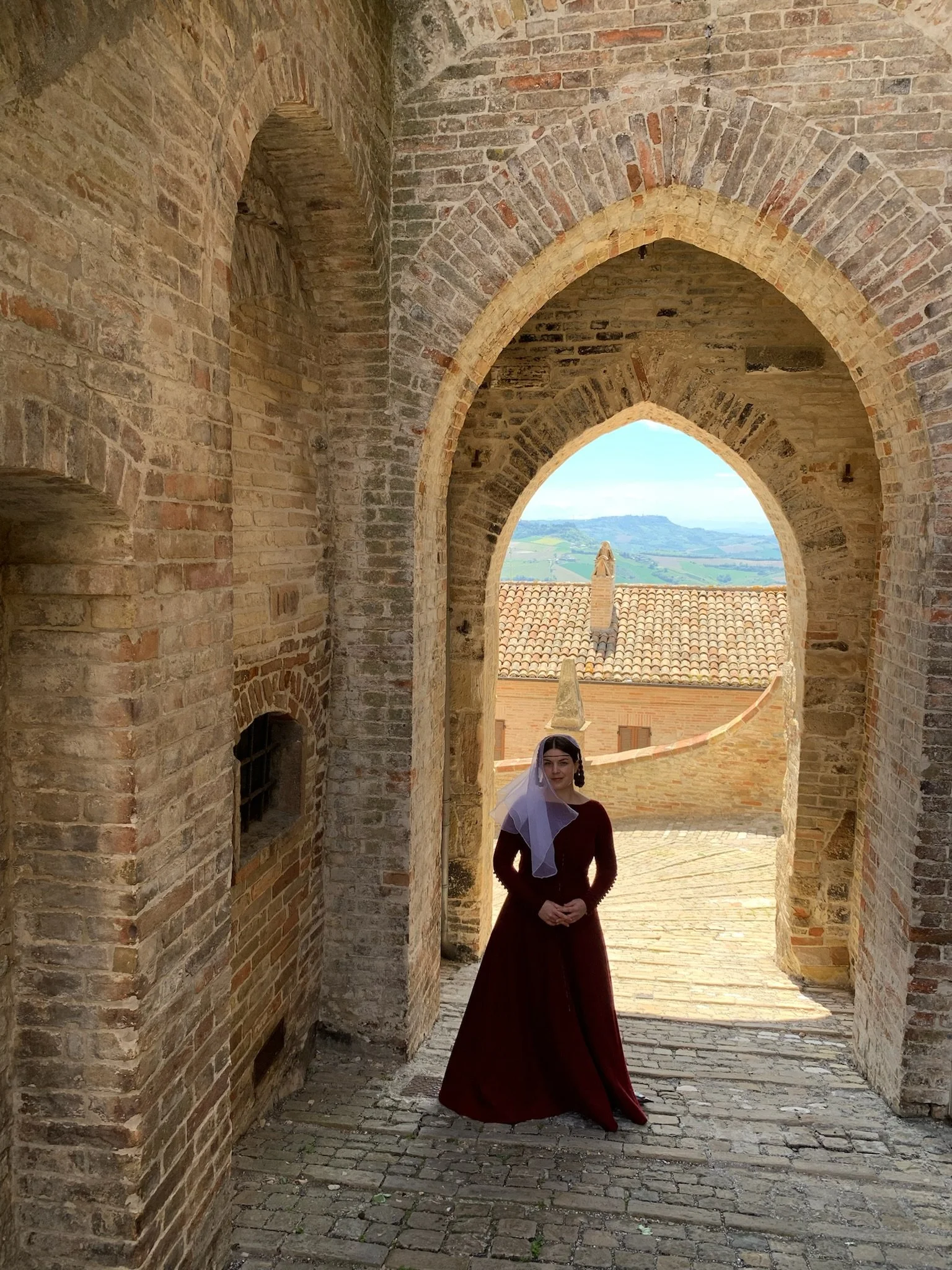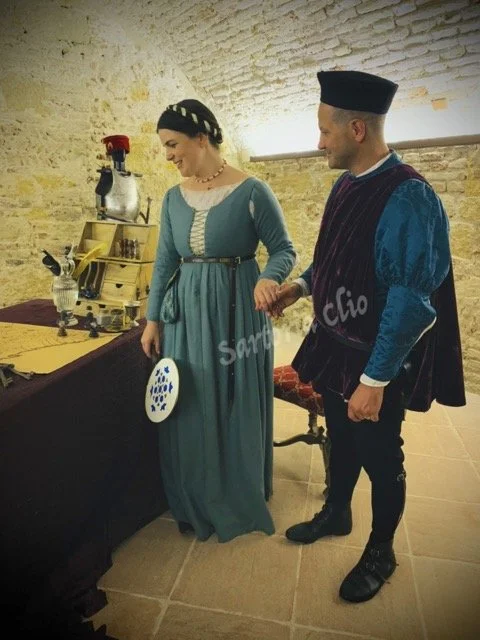
historical fashion from the inside out
Recreating clothing from the past using period techniques and materials
Constructing beautiful articles of clothing purely by hand and learning along the way is immensely satisfying. Obviously, not using a sewing machine and tracking down modern facsimiles of historical materials is time consuming. The research involved can take as long as constructing the garment, but I’m also a trained historian, so this aspect fulfills another interest of mine: being as accurate as we (or I at that moment) know how. I’m always learning, applying, or refining my skills in new or more accurate techniques and cuts with each project. My hope is that each piece improves on the last.
As an American based in Italy, sewing historical clothing has also helped me meet people with similar interests and pushed me to explore new historical styles. Please note that I’m not currently taking orders for costumes on this particular page; I just want to share my passion with like-minded people. Feel free to follow me on Instagram, at sartoria.clio. That said, if you’re based in Italy and are looking for late medieval headwear in the Italian style, in that case I can help! Check out my page of copricapi.
The eras I enjoy sewing in…
Early 1000s
Mid to late 1300s
1400s
Mid to late 1700s
Regency fashion
Here are some photos of the items I’ve made. A few pieces repeat because I find myself mixing and matching to make the most of each one (i.e. my husband’s gray tunic and my burgundy medieval dress) by accessorizing to nudge a single item of clothing into an appropriate look for slightly different time periods.
Click on the photos below for additional views and pieces.
1000s
Evidence for this era was difficult to track down and in the end my and my husband’s outfits were more northern than southern European.
Mid to Late 1300s
Some of my earliest pieces are here, including my “classic” sideless surcoat and a dark red wool dress that I pair with many different headdresses. For this era, I rely on a profusion of buttons and some tablet woven edges for little refinement.
1400s
Some people call this the late Middle Ages or the Early (Italian) Renaissance. I quite like this period. To date, I’ve made three pairs of interchangeable sleeves for my high-waisted light green dress. For construction and decoration details, I like to consult paintings by Carlo Crivelli and the frescoes of Salone dei mesi in the Palazzo Schifanoia in Ferrara. The extant dress of the Beata Osanna Andreasi in Mantua also offers some important information for patterning and construction.
Mid to Late 1700s
Here I made what I like to call my “Watteau” dress (better photos coming soon!) and some other styles popular with modern costumers. My favorite resources for this period are the Patterns of Fashion series, Stowell and Cox’s 18th Century Dressmaking, naturally, and the published exhibition catalogue by the DAR, “An Agreeable Tyrant.”
Late 1700s to early 1800s or Regency
Here is another one of my fave eras and the latest one I create clothes in (so far). My favorite references are the same as for the eighteenth century, but I also like Percoco’s Regency Women’s Dress and La Mode en France 1715-1815 published by La Bibliothèque des Arts, Paris. The high quality photos on websites like that of the Metropolitan Museum, the Victoria and Albert Museum, Colonial Williamsburg, the English National Trust Collections online, and many more are instructive and offer inspiration.




